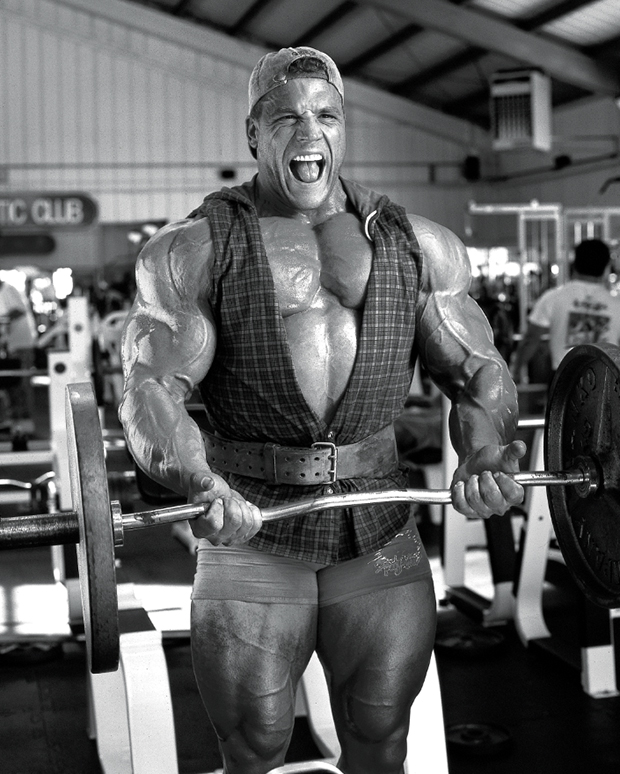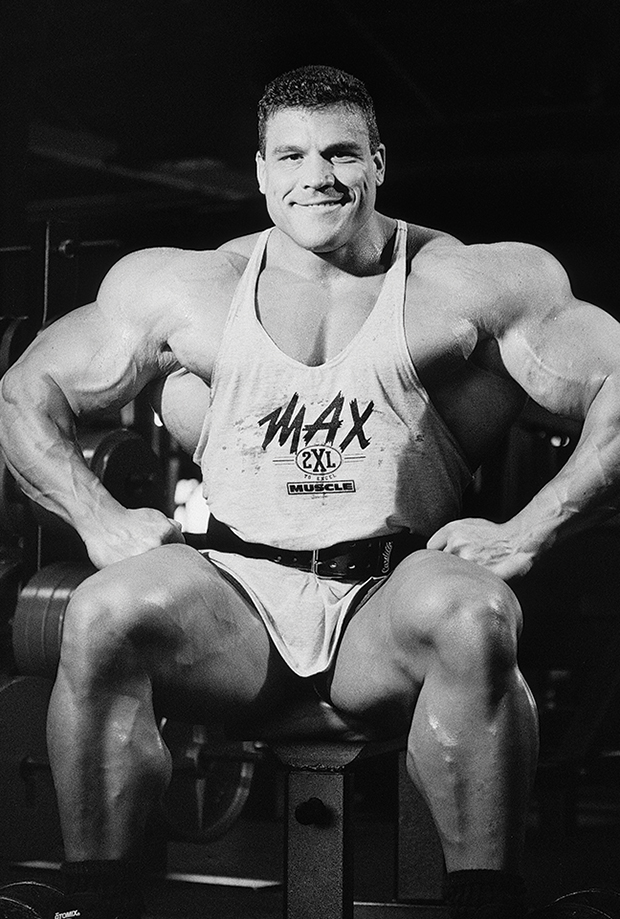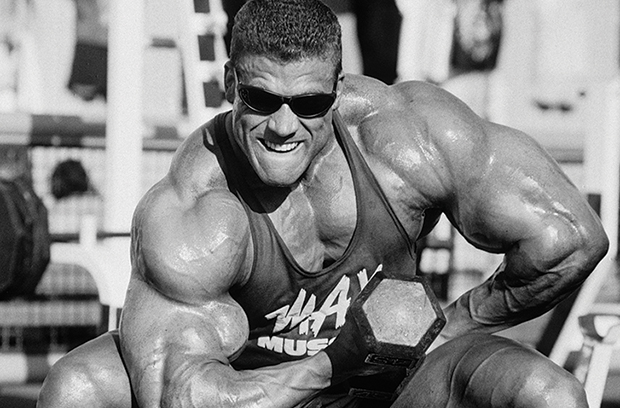Lost Interview! One-on-One with Greg Kovacs

In the late ‘90s, before I was part of the bodybuilding industry and just a huge fan, I had the opportunity to meet the world’s biggest bodybuilder at the Olympia—Greg Kovacs. Now when I say he was huge, I don’t mean Ronnie or Jay huge. I mean small vehicle huge! If you think being close to 300 pounds in the off-season is huge, try being 400 pounds and in shape! Greg took the bodybuilding world by storm with a physique that has yet to be matched today! When we talk about bodybuilding freaks, Greg Kovacs really epitomized the word “freak”!
I spent quite a bit of time with Greg over the last few months to get this interview for MUSCLE INSIDER, and we shared some amazing war stories about competitions, trade shows, sponsorships, the present state of bodybuilding, and other great athletes in our sport. If someone has seen it and done it all, Greg Kovacs definitely has!
Having stepped out of the bodybuilding spotlight for the last few years, big Greg Kovacs is coming back to pass on his knowledge and experience to a new generation of competitors.
Q. Greg, a little over a decade ago, you were arguably the biggest and most popular bodybuilder on the planet. I remember vividly the massive lineups just to take a picture with you. Can you tell us some of your fondest memories of being on the bodybuilding circuit?
A. Some of my fondest memories are the interactions I had with my fans at various events and even when I would be out somewhere and people would recognize me and approach me. I made some close relationships with a few fans that went out of their way to help me when I was doing tours in various countries. Also, when I began doing appearances with pros I had only a few years earlier looked up to and they would actually know who I was. I had the pleasure to spend a lot of time with various legends during these events, eating, travelling, and training with them. Ronnie, Dorian, Vince Taylor—the list goes on, and I made some good friendships along the way.

Q. Your career took off when you first appeared on the cover of Flex back in 1996. Can you tell us what it was like to see yourself on the cover of that magazine? All of us bodybuilding fans used to collect Flex back in the ‘90s, so making the cover must have been quite a feeling.
A. I found out about the cover for Flex from Wayne DeMilia about a week before it hit the newsstands, so when I saw my image there on my favorite hardcore magazine at the time, it was surreal. Seeing my name followed by “The New 320-Pounder Among Us” was great, and the feature article inside by Julian Schmidt was really well written. That was my first photo shoot as a pro, and it was taken by the legendary Chris Lund. Seeing the cover reminded me of the experience I had shooting with him. He worked my butt off, but the pics turned out great and I was happy with the pic they used.
Q. You made quite a splash in the mid-‘90s, and I remember seeing you in almost every magazine. You were gigantic, and nobody had ever seen that much mass and shape. What was your off-season weight and some of your most impressive body part measurements?
A. My regular off-season weight was between 400 and 416 at my heaviest. At my heaviest, I took some measurements at the request of my sponsor at that time, MuscleTech. I never really measured all that often. So my arm was just under 27 inches, chest was 72 inches. My forearm was over 19 inches. My thighs were almost 36 inches.
Q. Those are some incredible numbers! Of course you weren’t just all size. Can you tell us some of your heaviest lifts? I doubt many bodybuilders today can even come close to some of the weights I know you lifted.
A. I have flat benched 725 × 2, inclined 675 × 2, leg pressed 22 plates on each side for 15, hack squatted 10 plates on each side for 12, dumbbell shoulder pressed 200-pound dumbbells for 6, and flat dumbbell presses with 225-pound dumbbells I had specially made for my home gym. Behind the neck presses with 405 × 12. Military pressed 495 for reps on the Smith machine, and barbell rowed 495 for reps. I was fairly strong in most of my lifts. Being the only 400-pound muscular man, I was a huge draw at booths and appearances, so I had to focus mainly on keeping that bodyweight up. If I showed up at an appearance at less than 400, people would be disappointed. One example was an appearance in Iceland. I was a bit lighter than normal because I had barely eaten, what with travelling and a less-than-hospitable promoter who didn’t think I needed to eat afterward.
Q. With one of the most lucrative supplement contracts of all time, your directive was to just stay big and large for booth work. Do you have any regrets about not being able to focus on actually competing? You would have been going up against Ronnie, Flex, Shawn, Levrone, and Nasser.
A. Everyone has regrets. After I won the Nationals, I was known for size, so MuscleTech took me to a TV station for an interview and public weigh-in. I weighed 398 pounds, and everyone was disappointed. I think had I signed with Weider, I would have been focused solely on improving my physique for the stage, which of course would have entailed staying closer to contest weight and slowly refining and filling in the gaps and keeping my waist as close to when I won the Nationals. My weight was 292 onstage, so I feel at 325 to 330, I would have been perfect; going over 360 would have been necessary. That was the golden era of bodybuilding.
Q. Greg, what are your thoughts on the sport of bodybuilding over the last decade?
A. It’s changed a great deal over the last decade. In those days, you could forget getting a contract or any endorsements unless you were a pro and a good one at that. Only a handful of guys had contracts. Now you have amateurs who are only at the provincial level or even national level having endorsement contracts. Also it’s much easier to attain pro status than years back. This year at the US Nationals, they gave out two pro cards in each weight class. That’s a lot of pros in one year. Now it’s more about self-promotion than being the best. Now people have an audience before ever actually attaining the status to deserve one. It makes them feel like celebrities.
Q. Thank you for that trip down memory lane, Greg. You have such a storied career in our industry. What are you up to now?
A. I am currently coaching athletes. This was an evolution over the years, as I was always helping various athletes over the years. I had a knack of bringing people in at their all-time best. Some top Canadian athletes I’ve helped over the years include Scott Milne, Mike Platz, and Mike Asiedu, to name a few. I get really excited helping young up-and-comers and veterans alike because when I guide them to avoid all the physical and mental mistakes I have made, it’s a great feeling to see others succeeding at their best from my guidance. It makes me feel all the mistakes I made were for a purpose. My goal is to have anyone I coach become better athletes but, more importantly, better people.
Q. You’re obviously informed on putting on mass and will be sharing your knowledge with your new clients. What do you think of today’s methods with regard to mass-building in bodybuilding? We have some huge freaks out there, but still nobody that even comes close to you in your heyday.
A. I feel the young up-and-comers don’t build that base from heavy lifting and eating first before introducing “aids.” They are relied on much too soon in this current crop’s arsenal, limiting how massive they can truly become. There are athletes at the provincial level using higher dosages than most pros use. This sport is about time and consistency.
Q. I like to think you are one of the pioneers for Canadian bodybuilding, and you won your IFBB pro card back in 1996 by wiping out your competition with ease. I’m happy to see many of our athletes placing high at shows, and interest is at an all-time high. What are your thoughts on the state of bodybuilding in Canada today?

A. I feel when they started giving out more than one pro card a year, there is too many. I think just one to the overall man and overall woman is enough. Our talent pool isn’t deep enough. We even gave a pro card to a few athletes who didn’t even win their class. I’m sure a few class winners who were passed over were not too pleased when someone who couldn’t win his class got a pro card over them. We need to make sure the athletes we send to the pro ranks are going to be competitive, and frankly, if you can’t win overall at the Canadians, then go back to the gym and make improvements. Simple as that.
Q. What are some of your bodybuilding predictions for 2013?
A. 2013 will be probably be a big one. The Mr. Olympia will actually be a nail-biter with Jay Cutler re-entering the mix. Kai showed this year that Phil is beatable, so next year will have huge hype as it approaches. We still need that one phenom who as an amateur you can tell that once he gets his pro card he will immediately be a force on a pro stage. That hasn’t happened in years. And I predict Team Kovacs will grow and start dominating the stage and bodybuilding world in 2013 and beyond.

